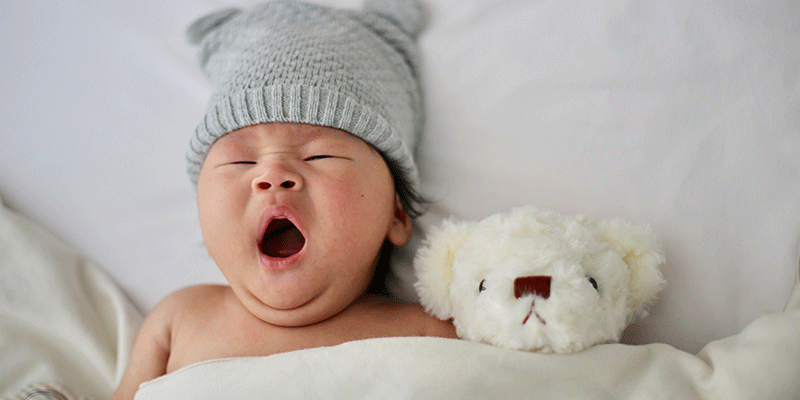
To your dismay, you may discover that the fine hair that covered your child’s head when she was born soon begins falling out. If she rubs the back of her head on her sleep surface, she may develop a temporary bald spot there, even if the rest of her hair remains. This loss is not medically significant. The bare spots will be covered with new hair in a few months.
Another normal development is baby acne—pimples that break out on the face, usually during the fourth or fifth week of life. They are thought to be due to stimulation of oil glands in the skin by hormones passed across the placenta during pregnancy. This condition may be made worse if the baby lies in sheets laundered in harsh detergents or soiled by milk that she’s spit up. If your baby does have baby acne, place a soft, clean receiving blanket under her head while she’s awake and wash her face gently once a day with a mild baby soap to remove milk or detergent residue.
Your newborn’s skin also may look blotchy, ranging in color from pink to blue. Her hands and feet in particular may be colder and bluer than the rest of her body. The blood vessels leading to these areas are more sensitive to temperature changes and tend to shrink in response to cold. As a result, less blood gets to the exposed skin, causing it to look pale or bluish. If you move her arms and legs, however, you should notice that they quickly turn pink again.
Your baby’s internal “thermostat,” which causes her to sweat when she’s too hot or shiver when she’s too cold, won’t be working properly for some time. Also, in these early weeks, she’ll lack the insulating layer of fat that will protect her from sudden temperature shifts later on. For these reasons, it’s important for you to dress her properly—warmly in cool weather and lightly when it’s hot. A general rule of thumb is to dress her in one more layer of clothing than you would wear in the same weather conditions. Don’t automatically bundle her up just because she’s a baby.
Between ten days and three weeks after birth, the stump from the umbilical cord should have dried and fallen off, leaving behind a clean, well-healed area. Occasionally a raw spot is left after the stump is gone. It may even ooze a little blood-tinged fluid. Just keep it dry and clean (using a cotton ball dipped in rubbing alcohol) and it will heal by itself. If it is not completely healed and dry in two weeks, consult your pediatrician.
Last Updated 8/1/2009
Source Caring for Your Baby and Young Child: Birth to Age 5 (Copyright © 2009 American Academy of Pediatrics)
The information contained on this Web site should not be used as a substitute for the medical care and advice of your pediatrician. There may be variations in treatment that your pediatrician may recommend based on individual facts and circumstances.






